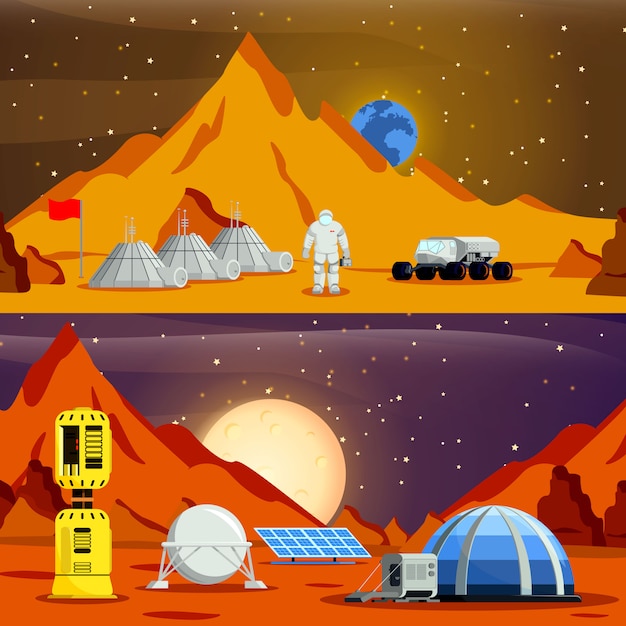Three Fascinating Facts About Mars

Mars is called the Red Planet because of its rusty red surface.
Mars is the fourth planet from the Sun in our solar system.
Mars has an average temperature of minus 80 degrees Fahrenheit.
Scientists believe that Mars once had flowing water on its surface.
The largest volcano in the solar system, Olympus Mons, is located on Mars.
Mars has a thin atmosphere made mostly of carbon dioxide.
The length of a day on Mars is slightly longer than on Earth, lasting around 24 hours and 37 minutes.
Mars has the tallest mountain in the solar system, called Olympus Mons.
The gravity on Mars is only about 38% of the gravity on Earth.
Mars has two small moons called Phobos and Deimos.
Mars has the largest canyon in the solar system, Valles Marineris.
Mars experiences weather patterns similar to Earth, including dust storms and polar ice caps.
The surface of Mars is covered in rusty, iron-rich soil.
Mars has a thinner atmosphere than Earth, making it more susceptible to solar radiation.
The first successful mission to Mars was the Mariner 4 spacecraft in 1965.
Mars has a fairly elliptical orbit, causing variations in temperature and season lengths.
Mars has a diameter of about half the size of Earth.
Mars is home to the largest dust storms in the solar system, lasting for months and covering the entire planet.
Mars has evidence of ancient riverbeds and deltas, suggesting a wetter past.
Three Fascinating Facts About Mars part 2
The Mars Exploration Rovers, Spirit and Opportunity, were designed to study the Martian surface and search for signs of past water.
Mars is named after the Roman god of war.
Mars is often visible from Earth and has been observed for thousands of years.
The first successful Mars landing was achieved by the Viking 1 lander in 1976.
The thin atmosphere of Mars makes it impossible for liquid water to exist on the surface.
Mars has a radius of approximately 3,390 kilometers.
In 2020, the Perseverance rover successfully landed on Mars to search for signs of ancient microbial life.
Mars has the largest volcano shield in the solar system, called Alba Mons.
Mars has a diverse landscape with vast deserts, towering mountains, and deep canyons.
The longest recorded spacecraft mission to Mars is the Mars Express, which arrived in 2003 and is still in operation.
The average temperature on Mars is about minus 80 degrees Celsius.
Mars has a thin ozone layer that offers little protection from harmful ultraviolet radiation.
Mars has lower gravity, which allows for higher jumping and longer distances for astronauts.
Mars has been a popular subject in science fiction literature and movies for many years.
The Curiosity rover, launched in 2011, has been exploring the surface of Mars since 20
Mars has one-third the gravity of Earth, making it a potential destination for future human colonization.
Mars has a prominent northern polar ice cap composed of water and carbon dioxide ice.
Mars has a more elliptical orbit than any other planet in the solar system.
The thin atmosphere of Mars gives the planet a pinkish hue when viewed from space.
Mars has one of the largest impact craters in the solar system, known as the Hellas Basin.
Mars has a unique geological feature called blueberries, which are small, spherical hematite formations.
Mars has a thinner atmosphere than Earth, which means the sky appears reddish during the day.
Mars has been visited by several orbiters and landers, including the Mars Global Surveyor and the Mars Phoenix Lander.
Mars has geological formations that resemble Earth’s, such as canyons, valleys, mountains, and impact craters.
Mars has a thin layer of frozen carbon dioxide at its polar regions, known as dry ice.
Mars has been a focus of scientific research and exploration as a potential future habitat for humans.

